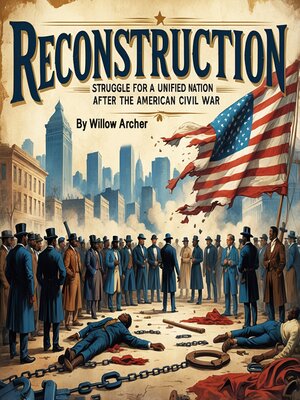Reconstruction
audiobook (Unabridged) ∣ Struggle for a United Nation After the American Civil War
By Willow Archer

Sign up to save your library
With an OverDrive account, you can save your favorite libraries for at-a-glance information about availability. Find out more about OverDrive accounts.
Find this title in Libby, the library reading app by OverDrive.



Search for a digital library with this title
Title found at these libraries:
| Library Name | Distance |
|---|---|
| Loading... |
This audiobook is narrated by a digital voice.
The assassination of Abraham Lincoln on April 14, 1865, just five days after Lee's surrender at Appomattox, thrust the monumental task of Reconstruction into the hands of Andrew Johnson, a Tennessee Democrat who had remained loyal to the Union but possessed neither Lincoln's political wisdom nor his vision for national healing. The murdered president had begun to articulate his plans for rebuilding the shattered nation during his Second Inaugural Address, calling for "malice toward none, charity for all," but his death left fundamental questions about the nature of peace unanswered and created a leadership vacuum at the most critical moment in American history.
The immediate aftermath of Confederate surrender presented challenges that dwarfed even the complexities of conducting the war itself. Four million enslaved people had been freed by the Emancipation Proclamation and the Union victory, but their legal status remained uncertain and their economic future entirely unclear. The Confederate states lay in ruins, their governments dissolved, their economies destroyed, and their social structures fundamentally altered by the abolition of slavery. Perhaps most importantly, the Constitution provided no clear guidance for how states that had attempted to leave the Union should be readmitted or what conditions could be imposed upon them.
The scale of physical destruction across the South was staggering in its completeness. Sherman's March to the Sea had left a sixty-mile-wide path of devastation across Georgia, while similar campaigns had destroyed railroads, factories, and agricultural infrastructure throughout the region. Cities like Richmond, Atlanta, and Columbia lay in ashes, their commercial districts reduced to rubble and their populations scattered. The plantation system that had defined Southern society for generations had collapsed, leaving both former slaveholders and freed people uncertain about their roles in the emerging social order.







